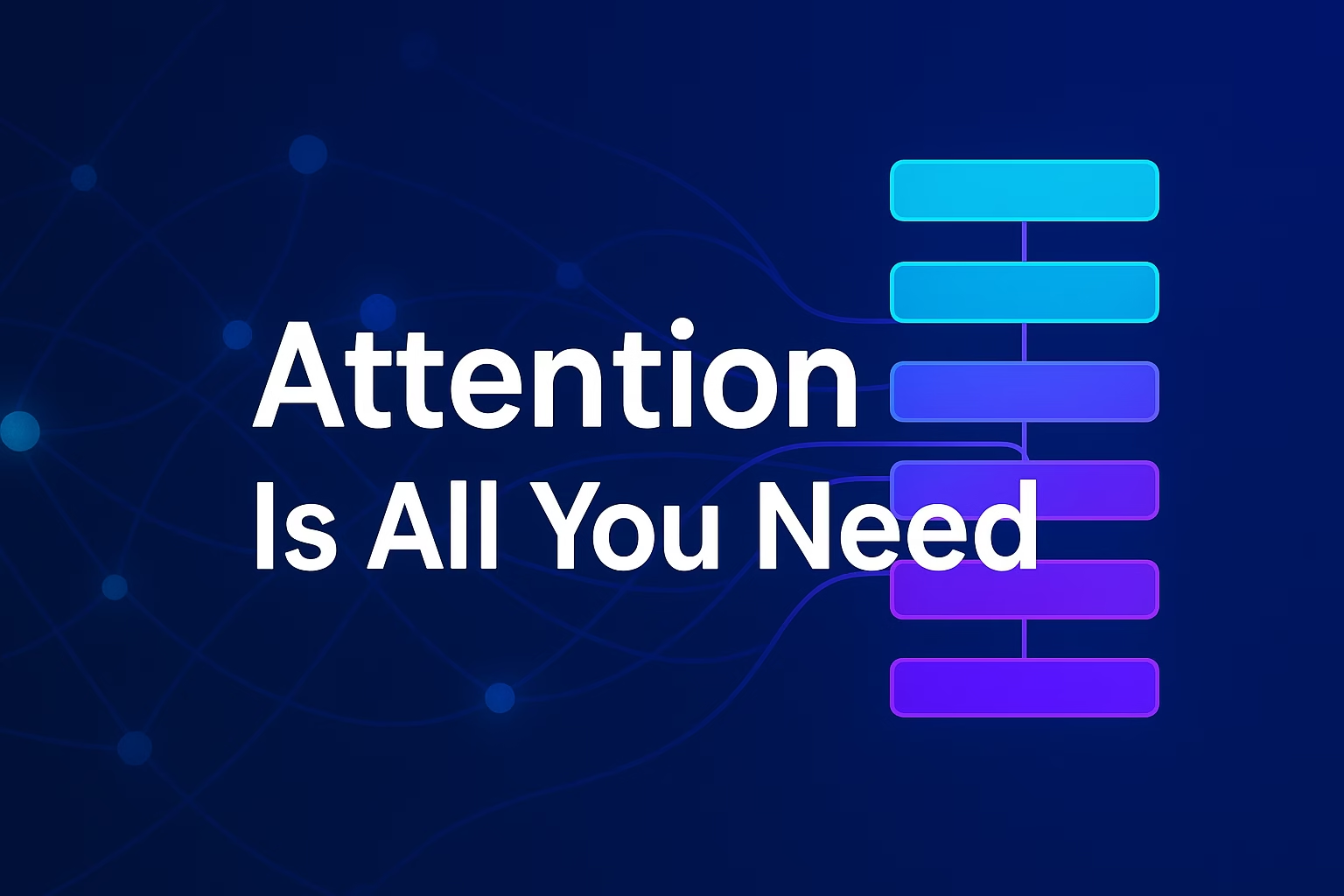Introduction: The Spark That Lit the AI Revolution
In 2025, we live in an era where AI assistants write code, debate ideas, design apps, and even create movies. But what if I told you this revolution didn’t start with ChatGPT or Claude — it started with a single research paper in 2017?
That paper was “Attention Is All You Need” by Vaswani et al., and it introduced the Transformer architecture. If you’ve ever used ChatGPT, Gemini, Claude, LLaMA, or even AI-powered search engines, you’ve already interacted with its legacy.
Let’s break down this landmark paper in simple terms, explain why it was so revolutionary, and explore how it continues to shape every AI we use today.
🔍 The World Before Transformers
Before 2017, most natural language processing (NLP) models relied on:
- RNNs (Recurrent Neural Networks) – slow, word-by-word processing.
- LSTMs (Long Short-Term Memory networks) – better memory, but still struggled with long sentences.
The limitations were clear:
- Training was sequential and painfully slow.
- Models forgot context in long paragraphs.
- Scaling to larger datasets was almost impossible.
This made AI chatbots clunky and translators unreliable. A real breakthrough was needed.
💡 The Big Idea: Attention Is All You Need
The Transformer flipped the old approach upside down. Instead of processing text word by word, it introduced a mechanism called self-attention.
👉 What does attention do?
It allows the model to look at all words in a sentence at once and decide which ones matter most to each other.
Example:
- Sentence: “The cat sat on the mat because it was tired.”
- Question: What does “it” refer to?
- Attention instantly links “it” to “the cat” — something older models often got wrong.
If you want to dive into the technical details, the full paper is freely available here: Attention Is All You Need (arXiv, 2017).
⚡ Why This Was Revolutionary
- Parallelization → Instead of step-by-step, Transformers process entire sequences at once.
- Scalability → Performance improved as researchers fed it more data and compute.
- Flexibility → One architecture worked for translation, summarization, reasoning, and later… large-scale conversation.
This made the Transformer not just a better model — but a foundation for all future AI.
🌍 The Ripple Effect: From Transformers to LLMs
Once the paper was published, innovation snowballed:
- 2018: BERT (Google) – taught machines to truly understand context.
- 2019: GPT-2 (OpenAI) – shocked researchers with fluent text generation.
- 2020: T5 & Megatron – scaled Transformers to unprecedented sizes.
- 2022: ChatGPT launched – AI became mainstream.
- 2023–2025: GPT-4, GPT-5, Claude, Gemini, DeepSeek — all built on Transformers.
Today, every major AI model, from open-source LLaMA to enterprise copilots, traces its DNA back to that 2017 paper.
🎯 Why It Still Matters in 2025
Even eight years later, Transformers remain the gold standard in AI. You’ll find them:
- Powering smartphone keyboards for predictive typing.
- Running inside AI copilots for developers, doctors, and lawyers.
- Driving creative AI like Stable Diffusion and video generators.
- Scaling across cloud data centers and shrinking into edge devices like laptops with tools such as Ollama, vLLM, and LM Studio.
Simply put: without Transformers, there would be no modern AI.
📖 A Simple Analogy
Think of old RNN models as reading a book with a magnifying glass, word by word.
Transformers are like reading the whole page at once with a highlighter, instantly spotting the most important connections.
That’s why AI jumped from awkward chatbots to models that can code, reason, and even write this blog post.
🔮 What’s Next After Transformers?
While Transformers dominate, research continues:
- State-Space Models (like Mamba, RWKV) – promise faster efficiency.
- Mixture of Experts (MoE) – make models smarter without making them infinitely bigger.
- Hybrid AI – combining LLMs with retrieval and reasoning for better accuracy.
But no matter what comes next, the DNA of the Transformer lives inside every breakthrough.
🏆 Closing Thoughts
The 2017 paper Attention Is All You Need wasn’t just another research milestone — it was the launchpad of the AI revolution.
- It solved bottlenecks in training.
- It scaled beautifully with compute.
- It unlocked the age of large language models.
Eight years later, whether you’re chatting with GPT-5, testing Claude, or running an open-source model on your laptop, remember: it all began with one simple but powerful idea — attention.
